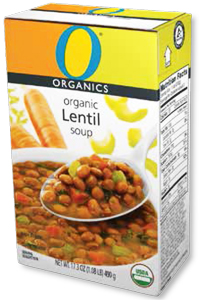Pack Expo Explores the Future of Packaging
PACKAGING
Despite the unpleasant influence of the never-to-be-forgotten Superstorm Sandy, which disrupted families, infrastructure, and transportation, the Packaging Machinery Manufacturers’ Institute (PMMI) conducted a successful Pack Expo 2012 in Chicago this fall. Featuring nearly 2,000 exhibitors, tens of thousands of visitors, and dozens of visual and verbal presentations, a striking future for packaging became more plainly visible.
It would not be possible to enumerate the innovations and concepts that shone over the foundation of packaging machinery, structures, and materials that comprise the ever-improving technologies that overwhelm the viewer. Companies from around the world filled stands with their mainstream (Bosch) horizontal form/fill/seal flow wrappers and casing machines. Kliklok-Woodman proudly showed its new baling machine for bundling pouches into compact units that occupy less distribution and shelf space. And how many iterations of stand-up flexible pouches sealed with rigid plastic dispensing spouts for fluid contents—and even flowable dry contents—came from Cheer Pack? Were there some that spouted spouts from the Spanish company Volpak’s continuous form/fill/seal machines? And did retort pouches containing Campbell’s ambient temperature Go Soups make it to the floor? What of a projected tomorrow was of immediate significance to food packagers?
The Next 10 Years
DuPont, expressing its continuing presence in packaging leadership, cited the results of a packaging industry survey. While today’s packaging professional is focused on cost, in 10 years, performance, food safety/security, and sustainability will replace cost as dominant trends, the data seem to say. Food safety/security will certainly remain a top trend.
Packaging professionals must develop solutions that holistically address the needs of the industry. The following are among the key trends for the future.
• Regulations will have a greater influence on packaging design.
• Packaging will play a more important role in a product’s commercial success.
• Plastics will continue to replace glass and metals, and flexible packaging will continue to replace rigid structures.
Respectful of the packaging professionals’ online survey, what were some highlights of on-the-floor observations by a team of experts from HAVI Global Solutions/Packaging & Technology Integrated Solutions (PTIS) led by packaging Hall of Famer Mike Richmond?
The PTIS Perspective
• Materials. A continued orderly drift is evident toward flexible package materials and innovation gradually displacing semi-rigid plastic trays, cups, bowls, and bottles, and, of course, metal cans, glass jars, and paperboard cartons. But naturally in the contemporary universe of food packaging, we are no longer the prisoners of single materials and structures. Paperboard is married to flexible in the resurgence of Tetra Pak’s Tetra Recart retortable paperboard/plastic/aluminum foil carton, leading one to predict an exciting winter of packaged soup delivery systems.
• Equipment. OEMs or Original (packaging) Equipment Manufacturers are migrating to cleaner machine designs, enabling fast and effective sanitation to prevent product contamination. This is being driven by the Food Safety Modernization Act. These machine engineering developments can also enable smaller packaging floor space requirements (significant building, utility, and maintenance savings) as distribution packaging machines (i.e., case erectors) can be installed in nearly the same space as the primary and secondary packaging equipment.
Machine and system flexibility are ever more important, enabling food packagers to run a wider array of products and pack configurations while minimizing change over time. Food packagers continue to seek ways to effectively reduce their labor force (displacing manual packing operations) while optimizing their capital spend to meet more complex production requirements.
--- PAGE BREAK ---
• Sustainability. Sustainability and control of spent food packaging was increasingly embedded into the overall equipment and material offerings, but they were not typically the main focus of new and enhanced offerings by package material and packaging equipment suppliers at this exhibition. And there is that emergent attention to food security and defense.
• Consumer focus. There is value in being able to communicate consumer benefits with packaging technologies rather than solely being a new technology. Richmond and his colleagues have written a new book, Creating Value Through Packaging, which focuses explicitly on the value of packaging to the company, the distribution network, and the target consumer. A comprehensive review of this book will be featured in an upcoming column.
• Science and technology. Converters, raw material suppliers, and packagers have been investing in science and technology as a differentiator from competitors. For example, a consortium of food, packaging, and equipment companies and a university have been developing and commercializing microwave assisted thermal sterilization (MATS), a totally integrated product packaging system.
Bemis (www.Bemis.com) has apparently licensed the European MicVac fill, microwave cook/pasteurize, and seal system for extended chilled shelf-life prepared foods. The integrated systems are also coming with steam release valves, reclosure systems, or fitments where needed, to drive consumer convenience and benefits.
Aseptic Food Packaging Systems
Claranor, a French maker of dry sterilization equipment, and Fowler Products, a Pro Mach company that specializes in bottle closing equipment, have joined to apply Claranor’s pulsed high intensity light surface sterilization technology to bottle closing and sealing. Claranor achieves the effect with short-time, intense microsecond arc pulses generated from Xenon lamps. The arc is highly ionized gas with strong currents with peak power, rich in ultraviolet, of about one megawatt. The effective radiant energy is one kilowatt per square centimeter leading to a 3–5 log reduction in microbial count. Coupled with an ultraclean environment in the bottle finish space, bottled products can be elevated to extended refrigerated shelf life and even ambient temperature shelf stable.
The technology is also being applied to sterilization or decontamination of plastic cups and flexible lidding for dairy products such as yogurt and unit portion drinkable yogurt or juices. The company asserts that their system eliminates the use of chemicals that might leave undesirable residuals, or of pre-sterilization with ionizing radiations such as gamma rays with their hazards of recontamination after processing.
Italy’s GEA Procomac (www.procomac.it) introduced its new aseptic blow/ fill/seal (ABF) technology, a rotary aseptic blow molding machine with an integrated aseptic filler and capper. The technology, which sterilizes the polyester pre-forms and not the formed bottle, significantly reduces the use of chemicals that are feared to leave residuals.
Barrier Package Materials
An innovative barrier coating made from “nano-bricks” has now shown promise to enhance the barrier properties of plastic bottles. Developed at the Polymer Nanocomposites Laboratory at Texas A&M University, the nano-film consists of 70% clay plus polymer, making it more environmentally friendly than current plastics. The coating is less than 100 nm thick. When applied on surfaces of polyester carbonated beverage bottles, the coating slows the outward permeation of carbon dioxide gas by 100 times. Barrier performance can be tailored by changing the polyelectrolyte, clay, and number of layers. The organized nano-brick wall structure is the source of what is claimed to be the most oxygen impermeable film in existence.
Composite Carton and Pouch
And hardly to be “outheadlined” is the Zipbox® combination paperboard carton and flexible pouch from T.H.E.M. (Technical Help in Engineering and Marketing) (www.them.net) and ITW ZipPack. The base is an unlined paperboard carton to which is heat sealed the “top half” of a flexible pouch to allow a wide opening through which the package is filled. By no coincidence, the closure contains a zipper for ease of reclosure and opening. The flexible pouch is subsequently heat sealed with a fold-over closure that permits stackability. Originally engineered to function as a cereal package, it appears that the first commercial application is for Plantation granulated sugar.
Visual, Audible, and ‘Scentsible’ Food Packaging
Sun Chemical has teamed up with ScentSational Technologies (www.scentsationaltechnologies.com) to introduce SunScent™ coatings, commercially printable coatings that incorporate aroma directly onto the substrate. The scent remains inactive until consumers handle the package and trigger a release.
--- PAGE BREAK ---
Available for flexographic, rotogravure, and offset decoration, SunScent coatings can be applied directly onto packaging as a spot coating and done inline. Stock scents are available, but custom “signature scents” can be developed. The structures of microencapsulates in the coatings are engineered to prevent premature breakage during the printing process while delivering maximum scent release. SunScent coatings are said to be a cost-effective alternative to scratch-and-sniff technology as they are printed directly onto the primary package.
A Bountiful Future
As we awaken to the imperative for food packaging as the basis for optimizing the distribution for food, the reduction in food waste has been recognized. Food packaging is not a cost, but rather an added value—to decrease costs, to increase shelf life, to demonstrate consumer convenience, and to spearhead the drive to rid the world of hunger. Obviously, a brief of Pack Expo 2012 could hardly illustrate the multiple roles of food packaging machinery, materials, structures, and designs that populate our channels today and will reign tomorrow. Our few examples only hint at the drivers at work to deliver food to us and our cohorts, meeting the new safety, quality, convenience, environmental, and economic requirements as they are today and will evolve.
Perspectives on Packaging Fraud and Counterfeiting
The problem of food and packaging fraud has existed forever, said John Spink of Michigan State University in a presentation at Pack Expo 2012 this past fall. Good guys have unintentionally falsely labeled or communicated misleading packaging information since the beginning. But the bad guys—who appear to be too numerous to count—have been deliberately faking the contents, or the data, or the brand iconography, or the trade dress with increasing frequency.
Mostly, according to Spink, who specializes in the issue and its countermeasures, both parties are seeking economic benefit, i.e., to generate more revenue or profit by substituting less for more. Inputting apple flavor and sugar into water and labeling it juice, grinding wood shavings into roasted and ground coffee, filling high-end liquor bottles with moonshine and calling it aged 12-year-old bourbon, buying rolls of obsolete flexible package materials and using it to fill with fraudulent ingredients, or marketing frozen crab as imported fresh are among some examples of this kind of fraud. Generally such adulterations are harmless to health, but recently public health concerns have mushroomed as in the recent case of methanol in distilled spirits in Europe. Citations by Pack Expo exhibitors have underscored the difficulty in identifying product and package adulteration until visible harm erupts.
No accurate statistics exist on the scope of the problem, but experts estimate that up to 5% of food worldwide is affected. Is that staggering statistic enough to alert authorities and food packaging suppliers and food packagers to the risk?
How might we combat the problem? Universal inspection and oversight of every food packaging facility by regulatory authorities, by the companies themselves or via third party audits might increase the cost of food by 10% to 20%. Is the benefit worth the investment?
Self-examination—understanding the holistic nature of food and food packaging as a unit and watching incoming food and food packaging components in the perspective of their interactions—is a great start. Look for trouble where and when it is most likely to occur and intervene immediately. Be proactive in inspecting suppliers and developing close, mutually beneficial relationships. Such actions do not guarantee that no incidental fraud will arise, but working together to slow the flood of such incidents is a constructive step.
 Aaron L. Brody, Ph.D., Contributing Editor
Aaron L. Brody, Ph.D., Contributing Editor
President and CEO, Packaging/Brody Inc., Duluth, Ga., and Adjunct Professor, University of Georgia
[email protected]
